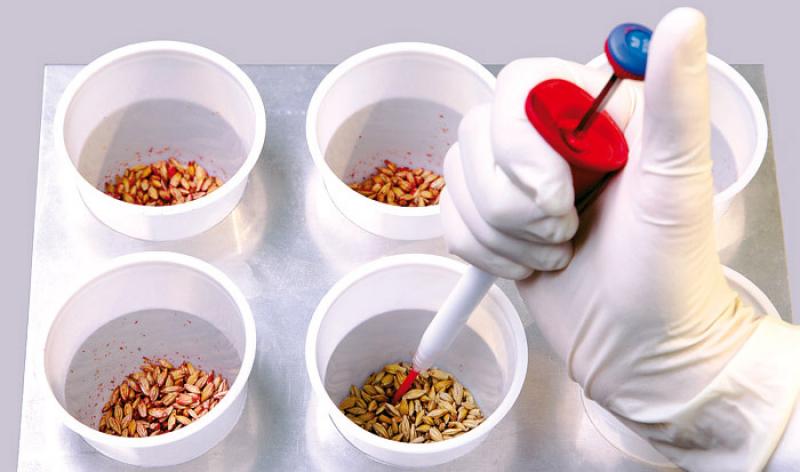Seed Treatment:
Introduction
Seed treatment has become an important agricultural practice followed globally to protect seeds and ensure better crop establishment. With increasing threats from diseases, insects and other stresses, seed treatment helps safeguard the health of seeds and young seedlings. In this article, we will discuss the various aspects of seed treatment including the need, methods, benefits and future scope.
Need for Seed Treatment
Growing demand for food with reducing cultivable land and effects of climate change have necessitated maximizing every input used in agriculture. Seeds being the basic input for any crop, protecting their health and vitality becomes crucial. However, seeds are susceptible to various biotic and abiotic stresses right from the time they are harvested till germination. Pests like fungi, bacteria and insects can infect seeds in soil and hamper germination. Environmental stresses like drought, flooding and temperature extremes can also damage seeds. All these factors threaten stand establishment and reduce yields. Seed treatment protects seeds from such threats using specialized chemicals and ensures timely germination of healthy seedlings. With global seed industry valued at $60 billion, seed treatment plays a key role in improving seed performance.
Methods of Seed Treatment
There are various methods used for Seed Treatment depending on the type of seed and threats to be managed.
- Dusting: In this method, seeds are dusted with a powder formulation containing active ingredients like fungicides, insecticides or other additives using a dusting machine. It is a simple and economical method for small scale use.
- Slurry: The active ingredients are mixed with water or other liquids to form a slurry or liquid suspension which is applied to seeds with a slurry treater or drum coater. It allows for application of high dose of ingredients and ensures uniform coverage.
- Seed Coating: It involves application of dry or liquid formulations on seeds under controlled conditions using various coating techniques like pan, drum and fluidized bed coating. Additional benefits like colouring, Adding rhizobia for legumes etc are provided. It is widely used method for commercial seed production.
- Other methods include vacuum seed coating, plate seed coating and film coating used for specific purposes. The method selected depends on seed type, field condition threats. Proper seed treatment ensures 15-20% increase in production.
Common Active Ingredients
Various active ingredients are used alone or in combination for broad-spectrum protection in seed treatment based on Integrated Pest Management principles.
- Fungicides manage seed and soil-borne diseases like damping-off, seed rots, smuts, bunts etc caused by fungi. Propiconazole, thiram, carbendazim etc are widely used fungicides.
- Insecticides like imidacloprid, thiamethoxam, and clothianidin control early season insect pests like aphids, thrips and wireworms.
- Nematicides such as avermectin combat plant-parasitic nematodes in soil.
- Bacterial and fungal biocontrol agents like Trichoderma and Pseudomonas control specific pathogens.
- Nutrients like molybdenum improve seed vigour and health.
- Rhizobia inoculants when added to legume seeds fix atmospheric nitrogen for plant growth.
Benefits of Seed Treatment
Systematic seed treatment provides multiple benefits throughout the crop growth cycle:
- Protection from soil and seed-borne diseases leads to improved germination rates by 10-15%.
- Control of early season pests prevents damage, ensures establishment of healthy seedlings and optimum plant stands.
- Quicker and uniform germination results in timely sowing/planting and synchronized crop development.
- Vigor enhancement due to rhizobia, PGPR and nutrients leads to 15-20% increase in yields.
- Less reliance on curative foliar spray reducing input costs and risks to environment and human health.
- Seeds treated for abiotic stresses like drought emerge better under adverse conditions compared to untreated seeds.
- Carry-over of active ingredients in soil/seed rhizosphere provides longer lasting protection.
Future Prospects
With growing adoption, seed treatment technology has immense future potential to ensure global food security in sustainable way. Few upcoming areas are:
- Development of seed coatings with innovative formulations releasing multiple active ingredients in timely manner.
- Nanotechnology based seed treatments for improved nutrient/water delivery and pest control.
- Combining seed treatment with traits like biofortification to addresshidden hunger.
- Integrating precision agriculture tools like IoT with seed treatment to enable remote monitoring and advisory.
- Market potential in Africa, Asia and Latin America being tapped with tailored products boosting smallholders' incomes.
Seed treatment is a cost effective green technology widely accepted worldwide for maximizing the genetic yield potential of quality seeds. With advancements, it will continue playing a key role in making agriculture more resilient and productive to meet the food demands of growing global population.
For more details on the report, Read- Seed Treatment
